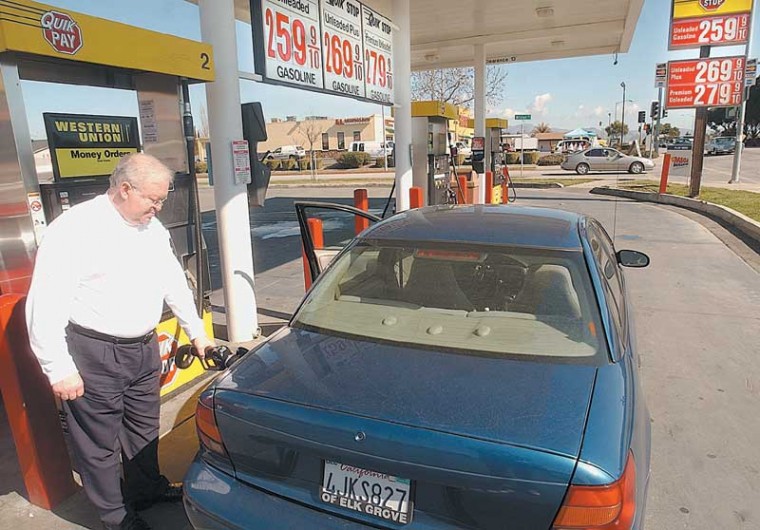
Hollister
– Rising gas prices are pinching commuters in the pocketbook,
but many say they have no choice but to pay the higher cost.
Hollister – Rising gas prices are pinching commuters in the pocketbook, but many say they have no choice but to pay the higher cost.
Pump prices have risen an average of 17 cents per gallon in Hollister since early December, according to a survey of 11 local stations. The average cost of regular unleaded here is $2.64 per gallon, although prices range from $2.51 at Arco on San Felipe Road to $2.73 at the Chevron and Shell stations on Airline Highway.
Some people deal with higher gas prices by cutting back on their driving. However, that may not be an option for many locals – the 2000 Census showed that more than 10,000 Hollisterites work outside San Benito County. Mark Mayhorn said he has to keep paying the higher prices, since he commutes from Hollister to Los Banos.
“I’m going to drive, whether gas is $3.50 per gallon or $1.50,” he said.
Marty Richman said he’s been paying more attention to his gas expenses, both because of higher prices and because he recently started a job in San Jose. Richman has a round-trip commute of 84 miles per day. That means he spends $50 per week on gas just to get back and forth to work.
“Boy, that adds up,” he said.
Richman added that higher gas prices have definitely affected how he approaches driving.
“The difference it makes for me isn’t that I stop getting gas where I want to, but that I combine trips,” he said. “If I need something in Gilroy, I’ll stop by on the way home. That makes a big difference.”
Hollister’s average pump price falls two cents short of the statewide average calculated by the American Automobile Association, but it’s also 41 cents more than the national average of $2.23 per gallon.
The AAA attributed rising prices to a number of factors, including refinery problems, nervousness about the relationship between the U.S. and Iran, and increasing oil prices caused by cold weather.
Richman said he won’t mind if gas remains expensive, as long as some of that money gets spent researching alternative energy.
According to Comey, California’s gas is normally more expensive than the national average, due in part to the state’s costlier blend of cleaner-burning gasoline. However, he said that should only account for a difference of around 10 cents per gallon. Another factor, Comey said, is the relative scarcity of competing gas companies.
Comey predicted that the unusually large 40-cent-per-gallon gap between state and national averages is likely to close in the coming months.
“Unfortunately, that’s probably going to come at the expense of everyone else, rather than California paying less,” he said.
Anthony Ha covers local government for the Free Lance. Reach him at 831-637-5566 ext. 330 or ah*@***********ws.com.









